
Blue lotus (Nymphaea caerulea), also known as the blue water lily, is a mildly psychoactive flower used as a sacrament by several early civilizations, most notably by the ancient Egyptians. It had an important role in their religious and social rituals, as well as a central one in their mythology and a lesser one in their medicine.
This gracious aquatic plant has descended a long way from its exalted status in ancient Egyptian customs to the fringes of contemporary psychonautical interest where it resides today. Still, for many users, this beautiful flower continues to represent a source of a variety of pleasurable psychophysical effects.
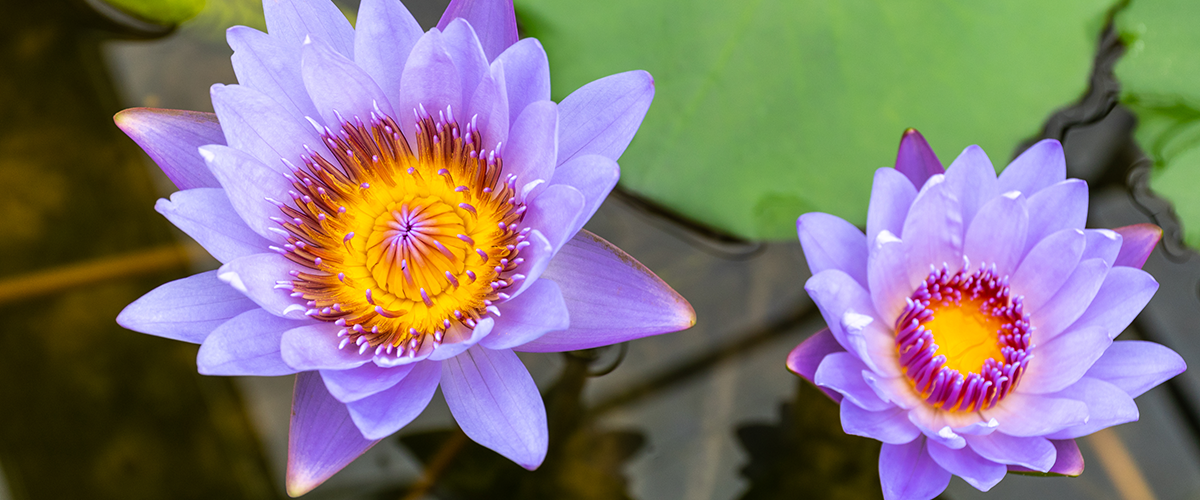
Nymphaea caerulea is known for its gorgeous blue lotus flowers, which can be seen rising above the water surface in summer and opening up during the daytime in their blooming season. The flowers are star-shaped, 10–15 cm (4–6 in) in diameter, and boast blue/mauve petals whose color smoothly transitions to the pale yellow of the pistil (flower center).
The blue lotus flower grows on thin, strong stalks, and is seen emerging from the water among numerous floating leaves, which are also connected directly to the plant rhizomes by long stalks.

Once abundant in northern and central Africa, most notably throughout the Nile Delta, Nymphaea caerulea has now mostly disappeared from that area. It also natively grows in lesser numbers in north-eastern, eastern and southern Africa (northern Ethiopia, Somalia, Sudan, Kenya, Tanzania, Uganda, Zaire, Angola, Malawi, Mozambique, Zambia, Zimbabwe, Botswana, Namibia, and South Africa), and in some parts of southwestern Asia, as well as in India and Thailand.
It has been widely naturalized throughout eastern Australia, in several island countries in the Pacific, and Argentina and southeastern Brazil. Due to its relative ease of growth, Nymphaea caerulea is presently also abundantly cultivated by gardening enthusiasts around the world.
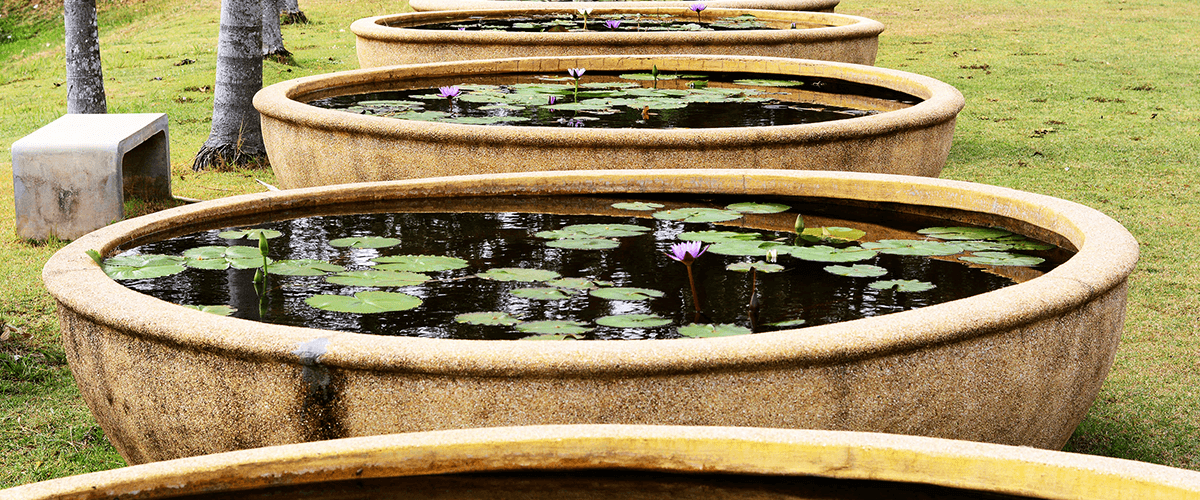
Nymphaea caerulea is traditionally cultivated from the rhizomes, but it was recently discovered that growing it from seeds is far easier and more economic. As the species is not nearly as abundant as it once was in the wild, everyone with a green thumb and the means to do it is encouraged to try to grow this beautiful plant.
The seeds should be germinated in small pots, pressed into about five centimeters of regular garden variety soil consisting of sand, silt, and a bit of clay. The pot should be filled with water up to about two to three centimeters (one inch) above the soil. Bottled, distilled, or rainwater should be used rather than tap water.
For the seedlings to sprout, they will need to be in a warm environment (above 24°C or 75°F) with plenty of sunlight. After a few days, grass-like sprouts will emerge. They will eventually grow two leaves which will rise up and start floating on the water surface. At this point, they can be replanted into deeper water, which may be in a partly shady spot.
The mature blue lotus plants are propagated easily by dividing the rhizomes. The rhizomes should be planted at a 45° angle during spring. The flowers bloom from July until the end of summer. Additional seeds can also be obtained from the flower once it fruits.
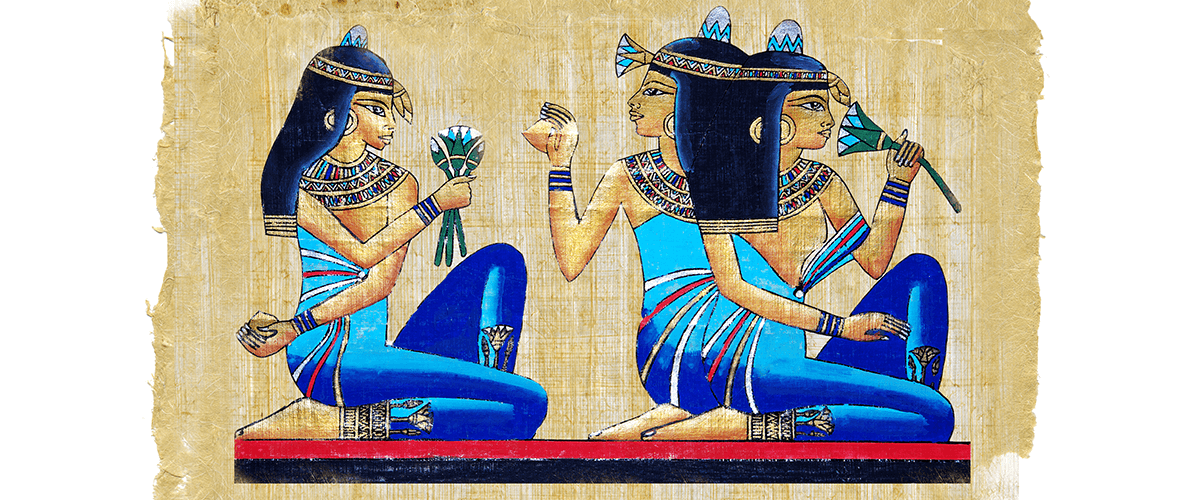
The blue lotus has a long history of traditional use in several cultures around the world. Records of its use are most abundantly available in ancient Egyptian scripts and art, as well as in archaeological findings from this land.
The plant was regarded as sacred and central to the Egyptian civilization; their mythology describes the blue lotus flower as the proverbial mother of their solar deities Amun-Ra and Atum. According to the lore, the world was originally engulfed in darkness and water until a large blue lotus appeared, opening up and introducing light and these first gods to existence.
Blue lotus flowers bloom during the summer, slowly emerging from the water and opening their petals to receive the Sun’s light. They close again in the evening. Due to all this, the plant became a symbol of light (the Sun), origin, eternity, and resurrection for ancient Egyptians.
Depictions of the blue lotus flower can be found engraved throughout tombs, statues, and temples of Egypt. Tutankhamun, arguably the most influential pharaoh of this ancient civilization, was thought to have been the incarnation of the Sun god, Amun-Ra, and was buried with a mass of blue lotus petals and a statue of his head emerging from a blue lotus flower.
Aside from its significance in religion, there is substantial evidence indicating that the blue lotus was also used for ancient Egyptian social and spiritual rituals. Most notably, researchers assume that the petals would be added to wine, after which the beverage would become an energy booster and aphrodisiac. Numerous portrayals of ancient Egyptian orgies and female portraits, in general, include motifs of the blue lotus perched atop the women’s heads, indicating their fertility and sex appeal.
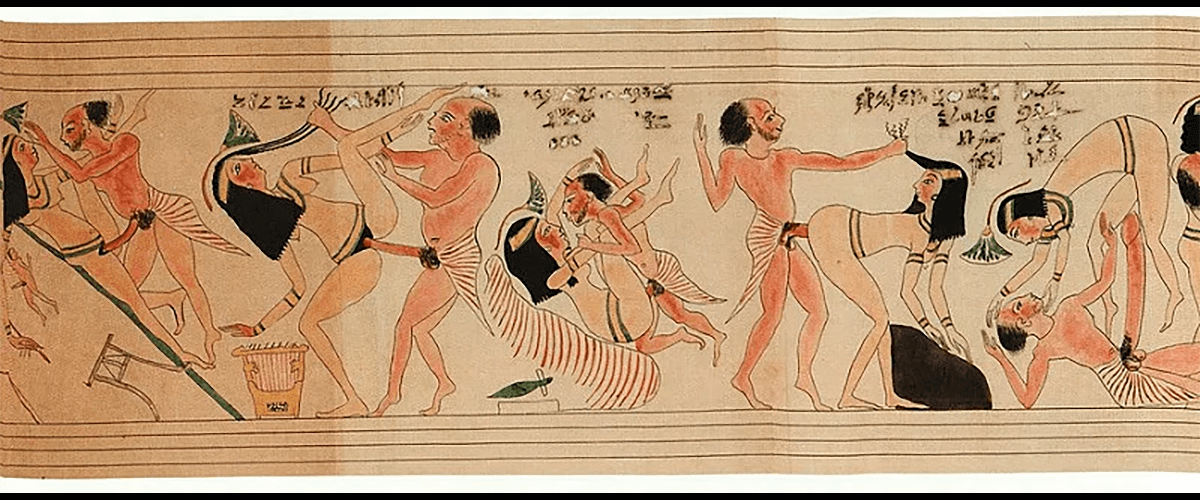
It is likely that the blue lotus would also be combined with other ingredients, such as mandrake fruits and poppy, to produce more intensely psychotropic potions.
The blue lotus, or one of its relative plants from the Nymphaea genus, was also found to have been used by the Mayan civilization in their religious rituals. The various archaeological findings from this period containing blue lotus motifs associated with priests and deities indicate that this flower played an important role in their cosmology just like it did for the ancient Egyptians. It’s also assumed that both cultures used the flower as a purifying ritual purgative.
Traces of mind-altering use of the blue lotus can be found in yet other cultures as well; for example, in Homer’s “Odyssey”, the flower appears as sustenance for the Lotophagi (lotus eaters), a mythical people who live isolated on an island in a state of dreamy forgetfulness and idleness due to constantly eating the plant.
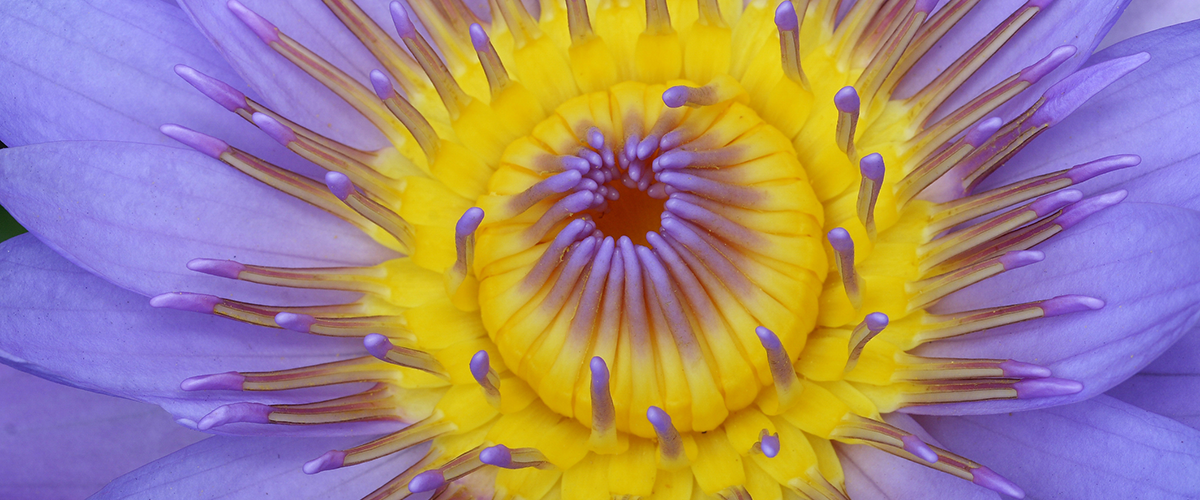
The two main active alkaloids in blue lotus flowers and rhizomes are aporphine, which is converted in the body to apomorphine, and nuciferine.
Both of these alkaloids interact with our dopaminergic system: apomorphine is a non-selective D1/D2 dopamine agonist, while nuciferine has been found to have mixed effects on dopamine receptors. Dopamine is a neurotransmitter that regulates motivation, attention, behavior, mood, pain, insulin levels, and gastrointestinal processes, to name a few of its many functions.
Nuciferine was reported to have anti-inflammatory properties, to potentiate the pain-relieving effects of morphine, as well as to potentially help treat liver disease in type-2 diabetes. It has also been found to inhibit glioblastoma (brain cancer) cell growth, making it an interesting candidate for cancer treatment research. Interestingly, it has shown promise as a treatment for premature ejaculation and erectile dysfunction.
Apomorphine was found to improve motor function and slow down neurodegeneration, making it useful in Parkinson’s disease and Alzheimer disease therapy. It reportedly supports neural growth and suppresses addictive behavior in rats, and it’s being looked into for its in vitro potential to suppress tumor cell invasion. It also inhibits the breakdown of dopamine, keeping more of this neurotransmitter available and likely accounting for most of the psychoactive effects of consuming the blue lotus. Finally, apomorphine has also proven effective in treating erectile dysfunction.
Other compounds isolated from the blue lotus were found to have antioxidant properties, meaning that they could help protect the nervous system from degradation.

The most common ways of ingesting blue lotus are by drinking or smoking/vaporizing it. Smoking blue lotus is more popular than vaping it. Dried flowers or the plant’s concentrated extract, resin, or tincture are easy to prepare for consumption.
When preparing a brew, the dried petals, powder, resin, or tincture can simply be added to hot water and drunk as tea once the liquid cools. However, as the alkaloids in the raw plant matter are not water-soluble, making a blue lotus tea from dried petals may not turn out very effective.
An alternative is to do as the ancient Egyptians did and to add it to wine or your favorite alcoholic beverage—after a few hours to a few days (with occasional swirling), you will have an interesting synergy of effects on your hand due to the chemical reactions taking place in the ethanol-rich liquid. Leaving it longer will make the drink more intense and bitterer, so you are advised to either add a sweetener like honey or use a sweet drink, to begin with.
Otherwise, the dry flowers can also be smoked, or the resin extract vaporized, to achieve more immediate effects.

The psychological effects of consuming blue lotus are pleasurable, although usually not very intense. The onset is about 15-20 min after drinking a blue lotus tea or alcohol infusion and almost immediately after smoking or vaporizing it.
Notwithstanding the high individual variation in subjective effects, the general consensus among users is that, in sufficient doses, blue lotus causes both feelings of relaxation and euphoria, not unlike a mild dose of opium. Some users describe it as a mix of MDMA and a sedative, wrapped in a mildly altered state of awareness resembling a waking dream. Gentle closed-eyed visuals may be present. A blue lotus high it calls.
Sensory and emotional perception is enhanced in many users. The tactile sensation may be heightened and coupled with a desire for closeness and intimacy, as well as a more profound appreciation of beauty. The blue lotus has been used as an aphrodisiac since ancient times, and its ability to instill a sexual desire and enhance potency and longevity in men is confirmed by many who use it now.
There are also reports of people using blue lotus as an anxiolytic or analgesic, for treating gastrointestinal problems (like diarrhea and dyspepsia), or lowering blood sugar levels. Some opt for applying blue lotus oils or salves to the skin to alleviate inflammation or pain.

Consuming blue lotus products is not known to cause dependency or any serious adverse effects in healthy users. In fact, it has been reported to mix quite well with other recreational substances such as marijuana or alcohol, and even with other psychedelics.
The only restrictions regarding taking blue lotus products apply to individuals with abnormal or altered levels of dopamine and glucose. This is not to say they shouldn’t consume it, but they should take precautions if doing so.
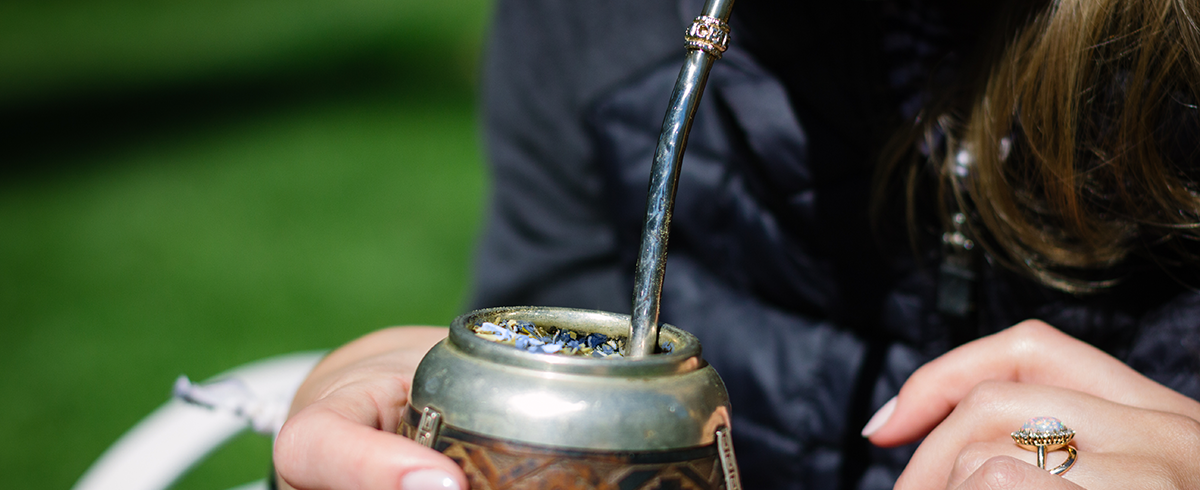
Like with cannabis, with no possibility of overdose, there are no particular dosage guidelines on consuming blue lotus products; basically, everyone is free to take as much as necessary for the effects to kick in.
Generally speaking, if using dried petals to brew a blue lotus tea or make an alcohol infusion, between 3 and 10 g should be enough per person. A few grams should suffice if adding the petals to a smoking blend or smoking them on their own.
If using resin extract, it can be rolled into two or three tiny balls and either added to a beverage or a smoking mix or vaporized using a vaporizer that functions with resin.
If using a tincture, between six and ten drops can be added to a beverage and drunk up to two times per day.

Nymphaea caerulea is generally legal throughout the world, although a few countries have preemptively banned this plant due to its products’ perceived resemblance with synthetic marijuana products. These countries are Latvia, Poland, Romania, and Russia.
In the US, blue lotus is legal to cultivate and the products are legal to sell and purchase; however, they aren’t approved for human consumption by the FDA. This is why they are often found in the form of incense or low-volume blue lotus tea bags.

There are many options to purchase blue lotus products online, but you will be hard-pressed to find a shop with our reputation and prices.
Elephantos has Blue Lotus for sale and has been a top-tier psychedelic provider for over 18 years, and we know that the way to stay on top is to prioritize product quality and customer satisfaction. You can trust us to serve you with the best products, lowest prices, utmost discretion, and fast delivery.
